Pancake is a universal dish—they are consumed in various forms all over the world, and everyone has a favorite made for their taste, possibly a top secret family recipe. Pancakes can be sweet, salty, free-from or “all in,” which is why they never get boring. In addition to experimentation, we can also learn a lot about the gastronomy of other cultures.
Centuries ago, this dish was more of a meat-filled, salty pie than a sweet dessert—an elastic dough mixed from a trinity of flour, eggs, and water or milk was a nourishing, nutritious alternative that had already been consumed by the ancient Greeks. The big advantage was that it didn’t require an oven, just an open flame and a pan or baking tin so it could be made even under the open sky. We already know a lot of versions today—plenty of blog posts and recipe videos dealing with the secrets of the almost cloudy light, Japanese souffle pancakes or with where to go in Paris to eat an authentic galette.

Csilla Szőke, Márton Nagy and Máté Milasovszky-Gálszécsy also recognized the many possibilities inherent to this dish. They’ve worked together before (including Rácskert and Vegan Garden, for example), but they wanted to open another place in the city center that could be a real playfield. The idea of pancakes was raised by Csilla’s daughter, of whom the dish is a great favorite, and the inspiration was complemented by a Roman vacation and a place specializing in tiramisu versions. All three fell in love with the idea, and they found the store on Nagymező Street, so thanks to the alignment of the stars, they could open Around Pancake—albeit just for takeaway.
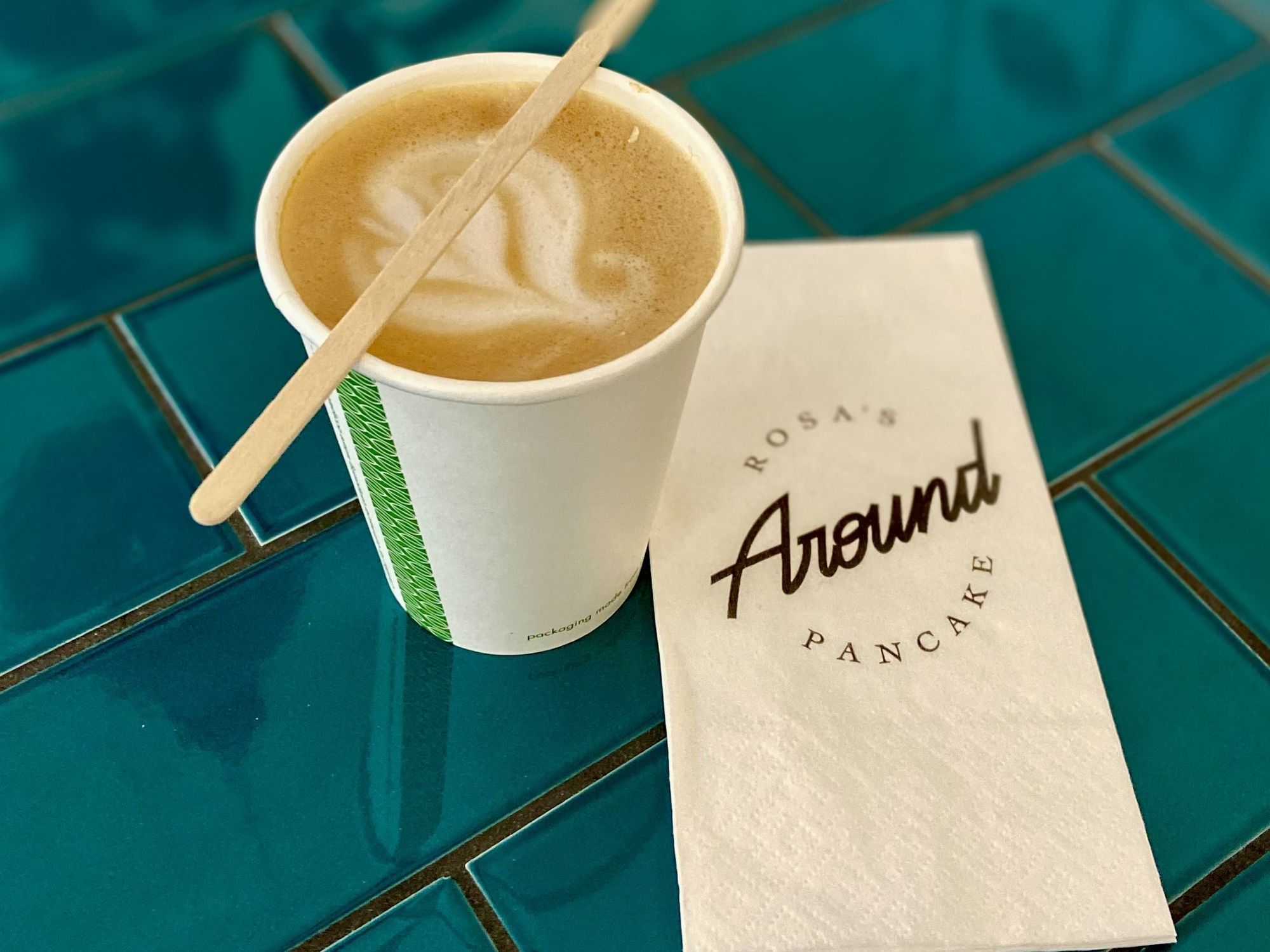
The concept is simple but very lovable—fourteen types of pancakes from ten countries are presented in sweet and salty flavors. Árpád Győrffy from Four Seasons and Enikő Kántor, an independent barista, also joined the invention of the food as professional advisors with great enthusiasm, so the dishes go beyond the classic streetfood representation: every detail is well thought out, completely authentic (or skillfully reflects the country) and served beautifully. We travel to the Far East, hop over to Scotland and then turn back to grandma—although it was difficult to narrow the offerings, they tried to get as many variations on the menu as possible, from traditional to innovative. It was also important that the food could withstand transport, come in free-from alternatives and be affordable and exciting for the Hungarian audience as well, so that they don’t attract tourists only.
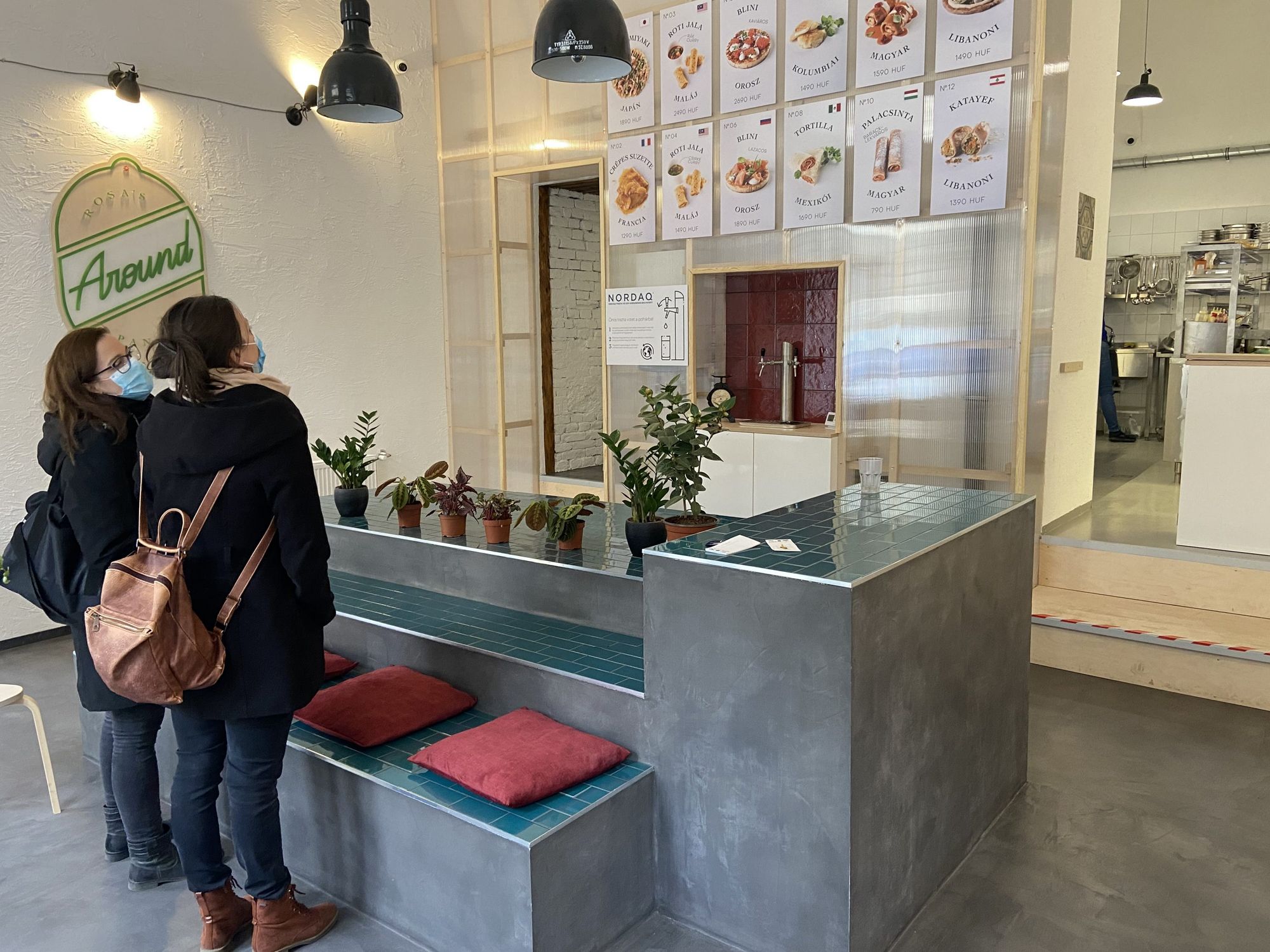
The interior is also adapted to this, which is spacious, pleasant, not alienating, yet simple. In the middle there is a robust countertop covered in dark green tiles—it’s exciting to imagine how maybe one day in peacetime, strangers will get to know each other while having lunch together, even from other countries, while tasting the flavors of other countries. The vision was carried out by graphic designer Balázs Pusztai and architect Gergely Hory, who really paid attention to every detail: this is how a Nordaq water filter could get a place in the shop, for example.
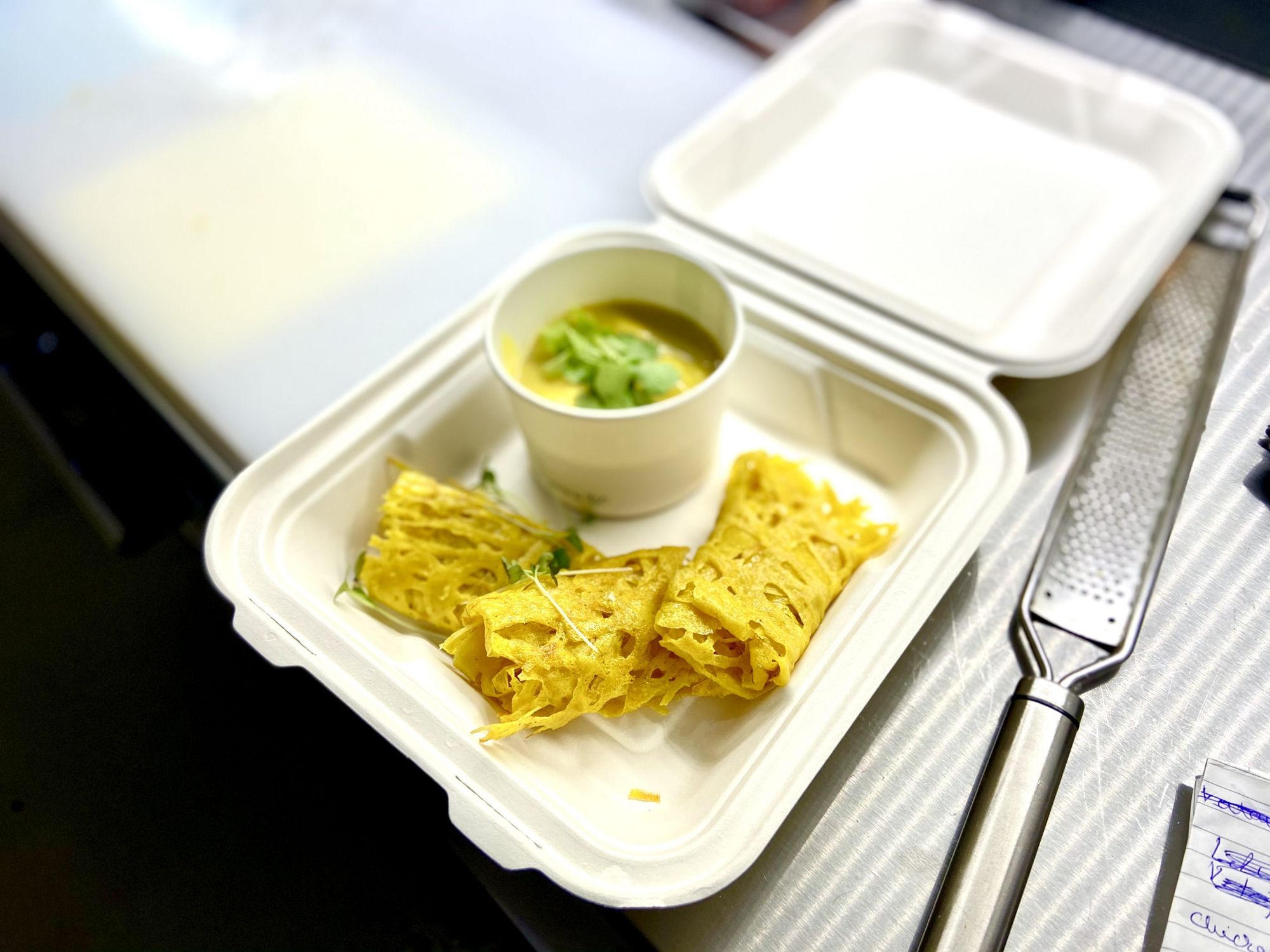
It is difficult to choose from the menu, as each dish is so different that one would rather taste everything. The roti jala I have tried is a Malay pancake that comes in an exciting, mesh-structured shape with chicken curry that serves as a dip. The curry is slightly spicy, while it is pleasantly creamy due to the coconut milk, so it goes well with the soft roll. Jumping to the other side of the planet, I suddenly find myself in Lebanon, where a transcript of kadaıf (a sugar syrup dessert made from pasta similar to the Hungarian vermicelli, popular throughout the Middle East—the Ed.) is reflected: qatayef contains three yeast pancakes with sweet honey and orange ricotta cream and pistachios. Lovely, harmonious and very nice dessert.
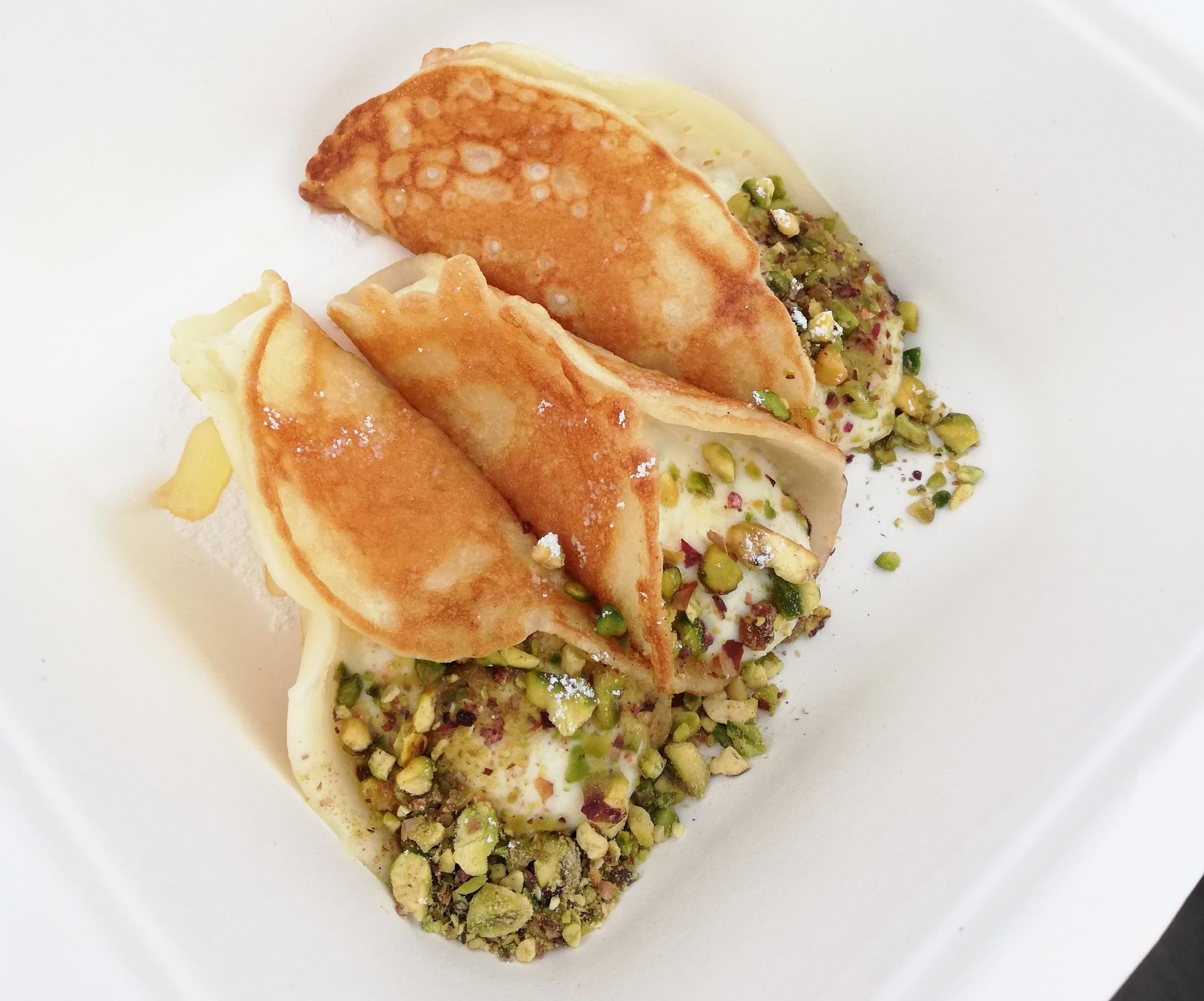
In short, if you’re craving comfort food or at least travel around the world while tasting everything, head to Nagymező Street—hedonists should also ask for a “Barbe à papa,” which is a light americano with a huge cloud of cotton candy on top.
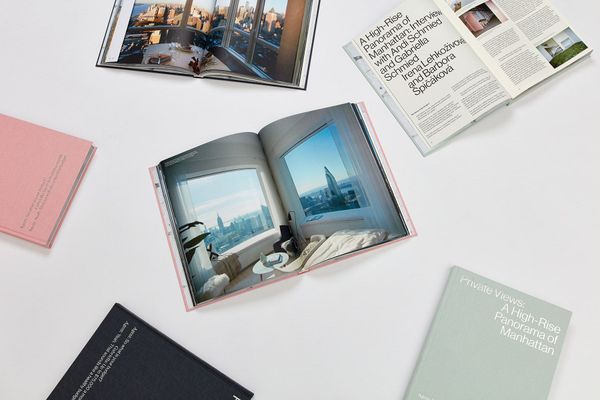
Book or performance? | Andi Schmied

Third-generation passenger spacecraft | Virgin Galactic










